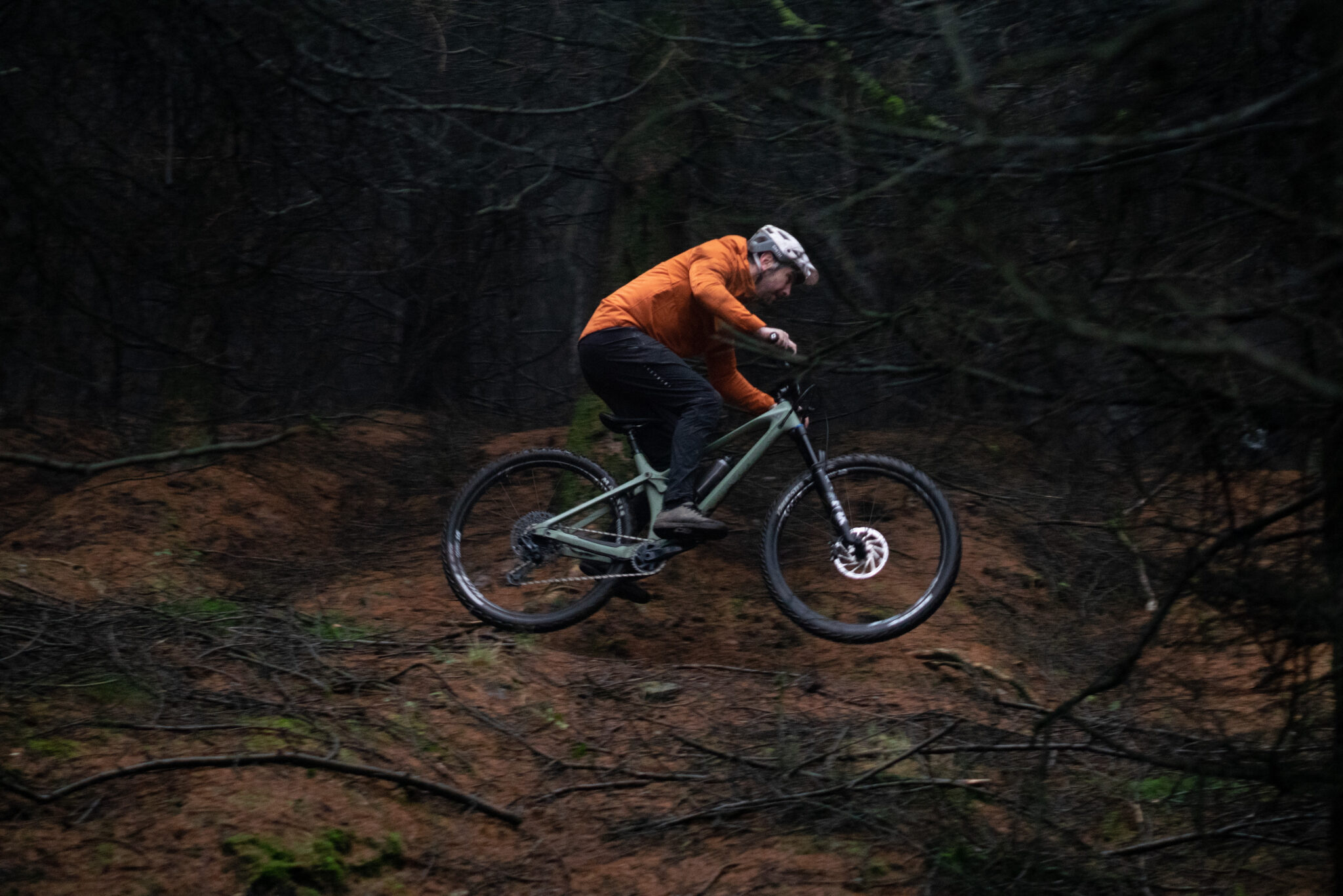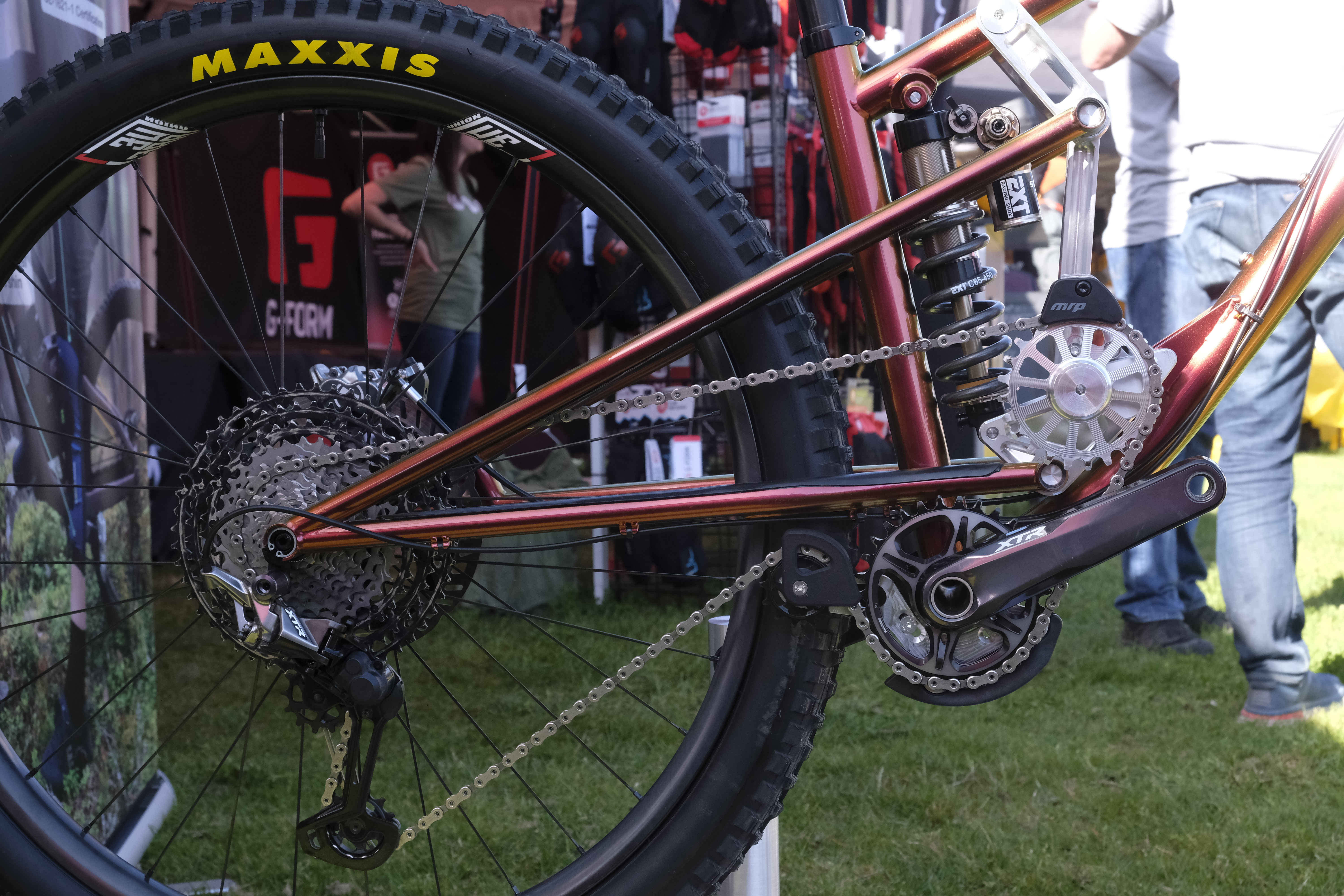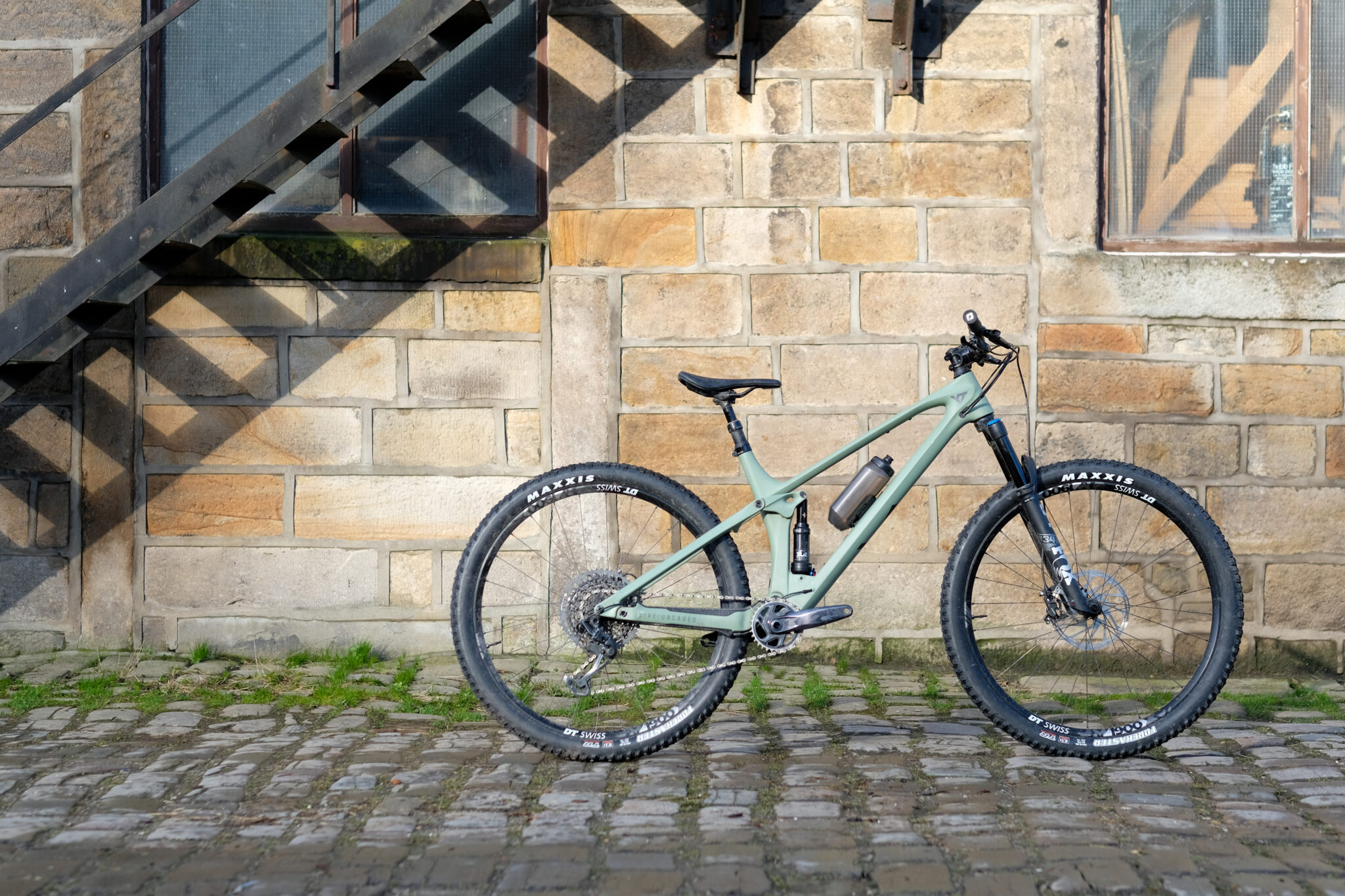While there may not be such a thing as The Best Mountain Bike, there are certainly bikes that will suit you more than others. Here’s our easy-to-follow guide on how to end up with the right bike.
Dirty Dozen*: our fave mountain bikes
- Nukeproof Scout 290 review – from £1,399
- Ragley Big Wig review – £1,999
- Canyon Stoic 4 review – £1,799
- Orange Crush MX Pro LTD review – £2,300
- Transition Spur review – £5,999
- Ibis Ripley review – from £5,249
- Cotic FlareMAX Gen 4 review – from £3,639
- YT Izzo Core 3 review – £3,899
- Vitus Mythique 29 VR review – £1,249
- Saracen Ariel 30 review – £2,199
- Commencal Meta AM 29 Team review – €4,999
- Specialized Status review – £2,399
- YT Capra Core 2 review – £3,199
*yes, there’s actually 13 bikes listed but hey
What do you want to use the bike for?

The term ‘mountain biking’ covers a confusingly broad church of off-road cycling. If you’re not really sure how to answer the above question, don’t worry. Just either get a hardtail or a mid-travel full-suspension bike. Both will pretty much do everything you ask of them.
If you do have more of an idea as to type of ‘mountain biking’ that you’ll be doing, you’ll hopefully be able to understand how we’ve divvied up this guide.
No race bikes here

One thing to note, we are not recommending race bikes, of any discipline, in this guide. This is a guide for regular riders, riding regular trails. No race tape. No stopwatches.
Anyway, back to this guide.
In ‘mountain biking’ there is plenty of overlapping genres. One person’s trail bike is another person’s enduro bike. Or, similarly, you can have two bikes with the same amount of suspension, but are firmly in different disciplines.
Suspension travel

Despite this, we still think the best general way of segmenting-up mountain bikes is by how much suspension travel they have. Sure, it’s not a perfect system and doesn’t tell the whole story, but it’s the best starting point for drawing up a shortlist of bikes to investigate further.
The amount of suspension travel a bike has does have a massive effect on how the bike feels to ride.
It’s not necessarily the case that bikes with more travel pedal worse than short travel bikes. You can certainly get short-travel bikes that bob around a lot more than a typical long-travel. Where the amount of suspension really comes into play is once you’re beyond the initial part of the suspension travel; how the bike deals with the middle and end parts of its available travel is where the difference lies.
Although it may sound overly facile, it’s a good idea to pair the amount of travel to the degree of gradient the bike will have to deal with. Steeper terrain calls for more travel. Shallower terrain calls for less travel.
Overbiked vs underbiked

Short-travel can be unpleasant and limiting in steeper terrain. White-knuckle out-of-your-depth.
Long-travel can feel indistinct and boring in shallower terrain. Seesawing along in a deep window of vagueness.
Again, there is a reason why 130-150mm travel bikes have become the defacto trail bike. They aren’t Masters of any particular trade but they aren’t annoyingly limited Jacks.
And with a decent trail bike you can actually tweak it (with setup and/or component swaps) towards either end of the terrain/gradient spectrum. Sometimes all it takes is a tyres swap, for example.
Hardtail or full suspension?

If hardtails and full-sussers cost the same as each other, would people still ride hardtails?
If hardtails and full-sussers weighed the same as each other, would people still ride hardtails?
Yes, people would still ride hardtails. Because hardtails are rad. As well as the immediate ride ‘feel’ of a hardtail, they also have less to go wrong, less to wear out, less to clog with mud.
And because they ARE cheaper and they ARE lighter than full-sussers, don’t imagine hardtails going away anytime soon.

Having said that, a lot of riders just prefer the extra comfort and – much more importantly – the extra control of full suspension.
Often, as with most things, it will come down to budget. Below £2,000, hardtails have a lot to offer and full sussers have a lot of compromises. Once nearer £3,000, full sussers hold sway.
Feel free to get a sub-£2,000 full susser. Just be aware it may cost you the same again in upgrades over the years.
Feel free to get to get a £2,000+ hardtail. Just be aware you really are getting increasingly marginal gains for your moolah.
How much to spend

Ooooooooh… anywhere between £300 and £3,000?
That’s not very helpful is it?
Seeing as you’ve asked, you can get perfectly capable hardtails from around £700.
Full suspension bikes start to be less-compromised once you get over £2,000.
If push came to shove, which it often does in these things, we’d go with around £1,200 for a hardtail and about £3,000 for a full suspension bike.
Those are the price points where compromises fall away and you don’t have to worry about expensive upgrades before the year is out.
Spending any more than £1,200/£3,000 is very much a case of diminishing returns. Sure, the bikes get better but not by much.
For most riders and most terrains, the fundamental ride experience of the £6,000-spec mountain bike is the same as the £3,000-spec one.
Must-haves vs whatevz

While we’re banging on about budgets, what sort of components are must-haves and what things are irrelevant?
Must-haves: hydraulic disc brakes, dropper seatposts (or at least dropper post cable routing), air sprung suspension forks, wide-range single-ring drivetrains (11-speed is fine but 12-speed has a bit more upgrade-ability). That’s it really. Everything else is either liveable-with or else relatively affordable to upgrade.
Irrelevant: anything carbon fibre, ‘fancy’ suspension coatings, adjustments you won’t use/understand.
Notes on geometry

Then you have a bike’s geometry to factor in. Geometry is actually more significant than suspension travel but, unfortunately, the bike industry doesn’t categories bikes by geometry.
We’re not going to go deep diving into bike geometry in this guide. This is not the time nor place. Suffice to say, we do have some pointers.
Be wary of bikes with head angles steeper than 67°. Bikes with steep (75°+) seat angles are ace. Standover is arguably more important than anything. Standover, along with reach, is something we’ll go into later on in this guide (keep an eye out for our ‘What size frame do I need?‘ guide next week).
Things that don’t matter

Or things that don’t matter as much as folk bang on about them anyway!
Suspension design.
Frame material.
Wheel size.
Okay, all three of these aspects have an influence on the bike but… not as much you’d think. Think of them as icing on the cake.
We wouldn’t choose or rule-out a bike solely due to its frame material or its suspension design. The only aspect of these three that is worth factoring in is wheel size.
The wheel size debate

Don’t worry though, we’ll make the whole wheel size debate as simple as poss…
If you are under 5’6″ (167cm) you should think about not getting a bike with 29in rear wheel; you may struggle with arse clearance and general standover issues.
If you are over 5’6″ (167cm), get whatever wheel size you want. Full 29in arguably suits most riders but some steeper-terrain riders prize the extra rear tyre clearance afforded by modern ‘mullet’ mixed-wheel size bikes (29in front, 27.5in rear).
Right then. On to some specific mountain bikes that we really rate…
Best hardtail
Again, no race bikes. No extremes here. No jump bikes. These are trail riding hardtails. Either have one as your one bike, or use one as your Other Bike. These are some of the best fun hardtails we’ve ridden.



- Nukeproof Scout 290 – a capable hardtail for aggressive riding
- Ragley Big Wig – classic hardtail feel
- Canyon Stoic 4 – lively and comfortable
- Orange Crush MX Pro LTD – superb woodland messer-abouter
Best short-travel full-suspension / downcountry
Sub-130mm full sussers. This category used to solely be XC race bikes but these days 100-120mm full suspension bikes are more versatile. Arguably better suited to experienced riders who don’t want/need a bit of bailing out assistance when things get hairy.



- Transition Spur – XC pace that doesn’t shirk descents
- Ibis Ripley MK4 – just enough travel Goldilocks
- Cotic FlareMAX Gen 4 – a delectable outlier
Best mid-travel full-suspension / trail bikes
130-150mm travel all-rounders. Okay then, there are loads of good trail bikes out there. For this shortlist we’ve concentrated on the trail bikes that have impressed us with especially good value over the past couple of seasons.



- YT Izzo Core 3 – looks sharp, rides sharper
- Vitus Mythique 29 VR – ready to rock
- Saracen Ariel 30 – just gets on with it
Best long-travel full-suspension / enduro bikes
150mm+ travel monster trucks. Or are they? If you’ve never ridden a longer travel bike, or not ridden one for a few years, you’ll be amazed how er, normal they ride. It’s getting to the point where you can have your cake, and eat it. Provided you have the funds.



- Commencal Meta AM 29 – the fastest non-DH Commie bike ever?
- Specialized Status – for having a lot of fun on
- YT Capra Core 2 – a long-travel trail bike that works
Best women’s specific mountain bikes

Women’s specific bikes… what does that mean?
Once upon a time it meant a nice step through bike so that your fulsome skirt had room to drape and cover your knees while you pedalled modestly along. Or something like that. And then for a while, it meant you’d get a pink or purple bike, with a lower specification of components for the same price as the unisex equivalent.
Thankfully the bike world has largely moved on from the days of ‘pink it and shrink it’, but it’s still worth checking what you’re getting in the name of being ‘women’s specific’, as in some instances this will be little more than a different saddle. What fits one woman’s bottom does not necessarily fit another’s. Unless you are very light and not very tall, you’re likely as well to pick the bike that suits your needs (and comes in a colour that you love and makes you want to ride it) and buy the perfect saddle separately.

These days there are broadly two camps when it comes to ‘women’s specific’ mountain bikes. The first camp is one which seems to be dwindling in number, where the geometry of the frame is designed around supposed differences between the proportions of women’s bodies and the distribution of strength across the body. Perhaps the biggest proponent of this approach is Liv – the women’s arm of Giant bikes. Canyon also produces some frames using this approach, which is based on a collection of data around men’s and women’s bodies. Similar data for children’s bodies led Islabikes to its ‘child specific’ designs. There continues to be some debate around this data, and Specialized moved away from this approach to one of a single unisex frame with different finishing kit – the second camp of women’s specific bikes.
In this second design camp, the bikes use different finishing kit to achieve their ‘women’s specific’ status. Sometimes this can be simply a different set of grips and a saddle, while in other cases you might also find the shock and fork have been tuned to a lighter rider. Some will also have shorter cranks. Many will come in different colours, and a few will give a different name to the women’s version of the men’s equivalent.
Perhaps where the ‘women’s specific’ element of design comes in most useful is at the more petite end of the scale. Often the women’s range will go down to an XS or XXS frame size – though may not go up as far as an L – whereas a unisex range often starts at a Small. For riders in need of a smaller bike, the women’s version of an otherwise unisex frame may well be useful.
Anything else?

You’d be forgiven for thinking that you need loads and loads of other things (besides a mountain bike) to go mountain biking. Websites, even this one, are full of reviews and group tests.
You don’t need loads of things. They can be nice and useful things to have, but you don’t need them.
Ruthlessly boiling it down, we’d say you only absolutely need: a helmet, some chain lube, a multitool, a spare inner tube and a pump.
Happy trails!
Join our mailing list to receive Singletrack editorial wisdom directly in your inbox.
Each newsletter is headed up by an exclusive editorial from our team and includes stories and news you don’t want to miss.





